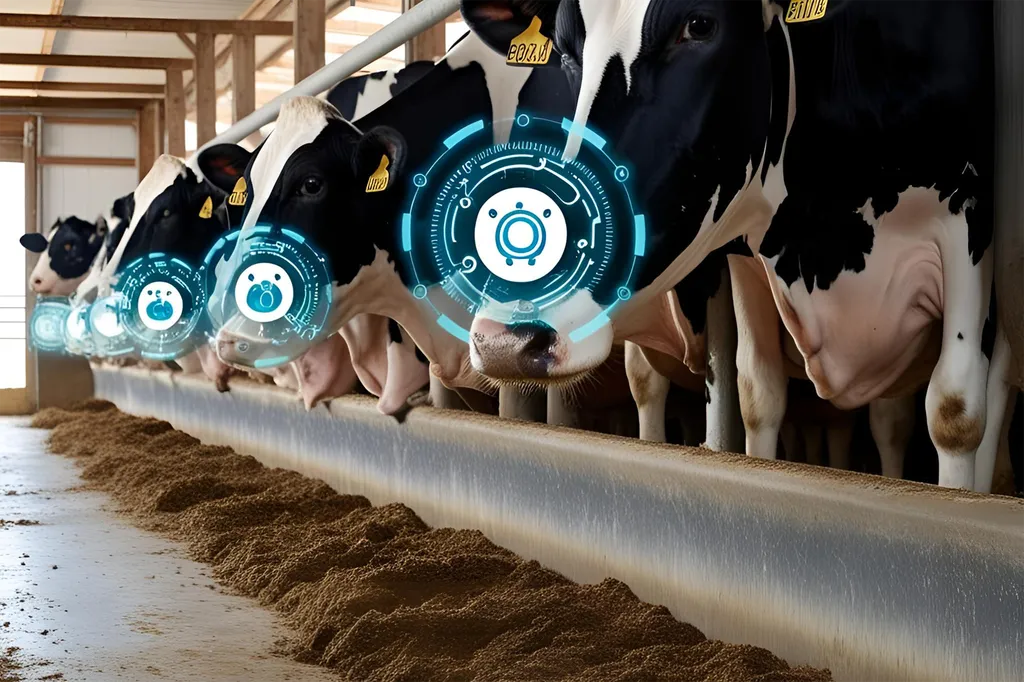In the quest to reduce greenhouse gas emissions, agriculture faces a formidable challenge: enteric methane. This potent gas, produced during the digestion process in ruminant animals, contributes significantly to global emissions. Now, a groundbreaking study published in *Frontiers in Sustainable Food Systems* offers a promising solution, demonstrating the power of AI-driven predictive modeling to mitigate enteric methane emissions effectively.
The research, led by Yaniv Altshuler from the Massachusetts Institute of Technology, builds upon previous work by validating an AI model across ten commercial farms over a three-month period. The study involved 339 Holstein cows and utilized an allicin-based essential oil, known as Allimax, derived from garlic. This organosulfur compound has shown potential in reducing enteric methane emissions, making it an ideal candidate for this validation study.
The validation process was designed to simulate two distinct scenarios. In the first, or “naive” scenario, the feed additive was applied uniformly across all participating farms. The second, or “optimized” scenario, took a precision agriculture approach, applying the additive only to farms where the AI-driven model predicted a significant reduction in enteric methane emissions.
The results were compelling. The AI-driven model demonstrated high accuracy in predicting the additive’s effect on enteric methane emissions at the farm level. Moreover, the optimized scenario achieved greater overall methane reductions compared to the naive scenario. “This underscores the value of a precision agriculture strategy that incorporates rumen microbiome genetics to guide additive applications,” Altshuler noted.
The implications for the agriculture sector are substantial. As environmental regulations evolve and the push for sustainability intensifies, farmers and agribusinesses are under increasing pressure to reduce their carbon footprint. This research offers a data-driven, customized strategy that not only enhances sustainability and productivity but also facilitates compliance with environmental regulations.
The study’s findings align with previous validations using different commercial feed additives, further supporting the adoption of AI-driven predictive modeling in agriculture. This technology could revolutionize the way farmers approach feed additives, enabling them to make informed decisions that maximize efficiency and minimize environmental impact.
Looking ahead, this research paves the way for future developments in precision agriculture. As AI technology continues to advance, we can expect to see even more sophisticated models that incorporate a wider range of factors, from weather patterns to soil health, to optimize farming practices. The potential for reducing greenhouse gas emissions and improving agricultural productivity is immense.
In the words of Altshuler, “This is not just about reducing methane emissions; it’s about creating a more sustainable and productive future for agriculture.” With the insights gained from this study, that future is looking increasingly bright.

